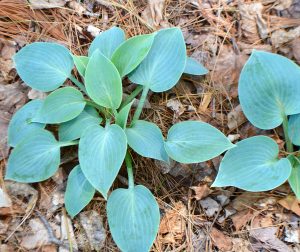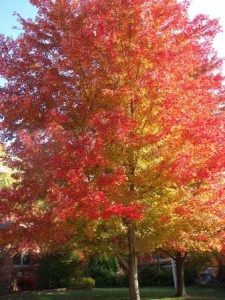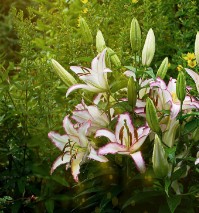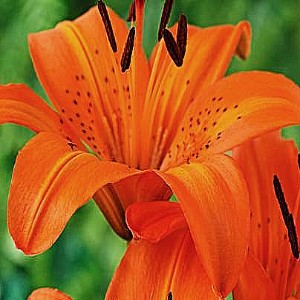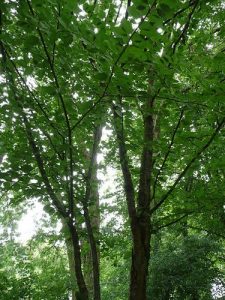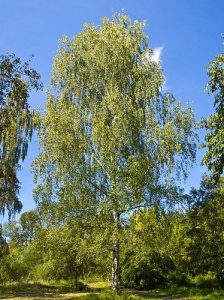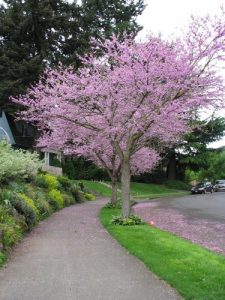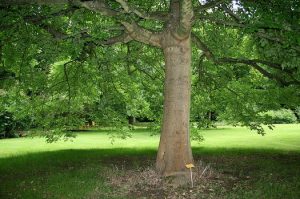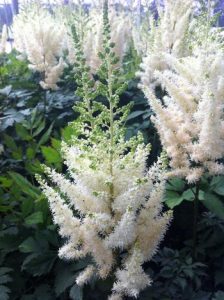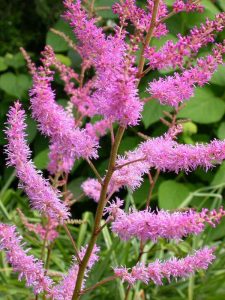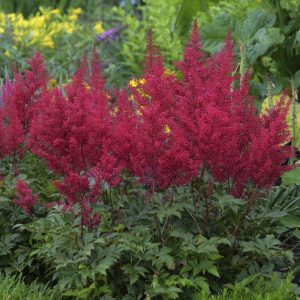 Hedges are neatly trimmed screens of plantings and can be decorative or serve a practical purpose. Adding hedges to your garden or front yard is a great way to create a sense of neat formality, structure, or natural division, or just add a warm touch of greenery. Decorative hedge plants are trimmed to precise sizes and shapes and include deciduous and evergreen shrubs. These hedges can also serve the practical purpose of providing a property with added security and privacy or shade.
Hedges are neatly trimmed screens of plantings and can be decorative or serve a practical purpose. Adding hedges to your garden or front yard is a great way to create a sense of neat formality, structure, or natural division, or just add a warm touch of greenery. Decorative hedge plants are trimmed to precise sizes and shapes and include deciduous and evergreen shrubs. These hedges can also serve the practical purpose of providing a property with added security and privacy or shade.
The best time to plant hedge material is in spring for evergreens and fall for deciduous plants. A stable and healthy hedge will take two to three years to fill in before you get a thick screen.
Another advantage of growing shrubs used as living walls or fences is that they come in different sizes and shapes that fit any style and size of your garden. The key is choosing the right one for your space and level of maintenance.
Why plant a hedge?
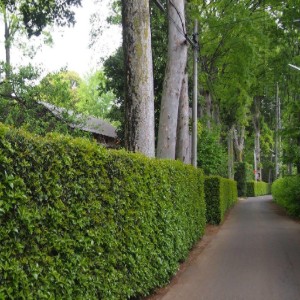
Hedges help to create privacy, screen unsightly views, create garden rooms, define your property boundaries and can help with noise control and act as a windbreak.
Some people do not like “hedges” but think of them as a backdrop! Just imagine a beautiful Japanese Maple with burgundy foliage planted in front. And how the green of the hedge makes the red foliage stand out in your landscape. Or, imagine some Pink Knockout
roses mixed with Bobo Hydrangeas planted in front and how the green of the hedge makes those colors pop!
Hedges are a great way to add a “Living” fence into your landscape. They are very eco-friendly.
We are offering a great selection of plant material to help you create your “living fence”
We have
Emerald Green Arborvitae an upright growing evergreen. That can grow to be 15 to 18 feet tall and 3 to 4 feet wide. Can grow about 12 inches a year. Easily maintain the desired height. We recommend planting 30 inches on center. A great option as it does not take up a lot of space.
Leyland Cypress a fast-growing conifer. Growing up to 3 to 4 feet in a year. They can get 30 foot plus tall and 12 to 15 feet wide. We recommend planting 8 to 10 feet on center. Deer resistant.
Gold Rider Leyland Cypress What a beautiful fast-growing conifer. Beautiful by itself but mix it with some green Leylands and it makes a show stopper living fence. It can grow 20 to 30 feet tall and 12 to 15 feet wide. We recommend planting 8 to 10 feet on center. Deer resistant.
Green Giant Arborvitae A strong, rooted evergreen tree
that is virtually disease-free. It has a uniform shape that seldom needs pruning but responds well to shearing. It can grow 25 to 30 feet tall and 10 to 12 feet wide. We recommend planting 8 foot on center. Some say it is deer resistant and others say not?
Skip Laurel A broadleaf evergreen. Growing 8 to 12 feet tall and 6 to 8 feet wide. Beautiful shiny green foliage. White fragrant flowers in the early spring. Responds to pruning nicely. We recommend planting 3 foot on center.
English Laurel Another broad-leaf evergreen is great for a fast-growing hedge. Shiny medium green foliage that responds well to pruning. Deer resistant. It can grow 15-foot plus. We recommend planting 4 foot on center
Compact English Laurel If you like the look of the English Laurel but don’t want it to get quite so tall then the Compact English Laurel just might do. It can grow 6 to 8 feet tall and wide. Deer resistant. We recommend planting 3 foot on center
Otto Luyken Laurel This smaller growing broadleaf evergreen has beautiful dark green foliage and a white fragrant flower. It tends to have a more bowl-shaped form and can grow 3 to 5 feet tall and wide. We recommend planting 30 inches on center.
So what are you waiting for?
Shop your favorite hedges now in our Hedge Happening! Special Offers are available for a limited time only. Starting September 19th at A & R Nursery and Sales in Woodland Washington. We are located at 35306 NW Toenjes Road in Woodland.
You may also call us at 360-263-4700 or email us for more hedge details.
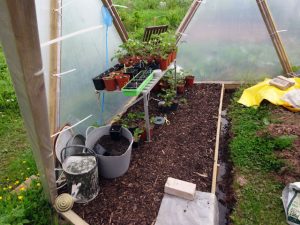
You might be wondering what have I done wrong that made a bad result for your garden. Whether it’s the best time of day to water your plants or how to get rid of slugs effectively, there are plenty of questions most amateur or beginner gardeners have and plenty of mistakes they make along the way to achieving their perfect garden.
Bad watering style
Many people water their plants at the wrong time of the day. If you water in the heat of the day you will do two things. You will lose a lot of the moisture through evaporation, and the water droplets on foliage can act as magnifying glasses for the sun, scorching the leaves. Water your plants either first hour in the morning or last thing at night to retain the moisture and protect the delicate leaves.
Another common mistake is to spray the surface of the area and believe that It is enough. Often if you scrape away a little soil after someone has watered you will find it is dry only a few millimeters down. You must let it dig into the soil. If it does not absorb easily, a good trick is to poke the soil all over with a broom handle and fill the holes with water. This water will then go down deeper to the soil slowly.
Slug invasion
Many people don’t start dealing with slugs until it is too late. Some Gardeners are using copper tape, grit, eggshells, beer traps. Start in early spring as the sun warms up if not, they will breed and breed and you will just be holding back the tide. Just make sure that they won’t multiply in the first place and you will have a much easier summer.
Planting a too-big tree in the front garden
Too often I see these humongous trees that have just taken over people’s front gardens. Like Conifers, oak tree and Norway maples invade windows and door spaces, blocking all of the light to the front some houses.
There are number of smaller, more modest trees that are appropriate for your garden that look stunning and won’t dominate the space. Acer rubrum ‘Franksred’ and Weeping White Pine are another two beautiful options. And don’t forget the striking Japanese Maples and the Newport plum. Any of these options will bring tons of character without needing tons of space.
Scalping the lawn
A lot of gardeners make the mistake of cutting the lawn too short, otherwise known as “scalping” . This is especially a problem in a drought or dry spell. If you know a drought is approaching, let your grass stay a bit longer. That would hold the moisture better and stay much healthier. Also, remember again not to water it during the heat of the day or you may burn the blades.
Murdering your own house plants
Most house plants are killed by kindness. Too much generosity with water is the number one cause of killing your plants. You should never let your plants be in the water for a very long period of time. A great style is to put about an inch of water in your sink and then sit your plants in it. After an hour, once they have absorbed what they want you to take them out and put them back.
Poor weeding
Don’t use a hoe to chop the top off of a weed. There are some weeds like dandelions and thistles have a strong root structure under the soil. You must dig as much of the root up as you can, or use a systemic herbicide that will absorb down into the roots and kill them.
Digging clay soil when it’s wet
If you do this, you will break down the structure of the soil and damage it. Wait until clay is not saturated with water, and then mix it generously with well-rotted manure. Some like to add sand as well.

Spring is no doubt a wonderful time to grow your garden and plant new ones. Everything is perfect for proper plant growth: cool air, adequate sunlight and some rains make it the ideal season to grow your greens. But did you know that planting in Fall also suggests the same?
Contrary to popular gardening beliefs, Fall can also be a good time to grow plants. The first phase of Autumn, or about 6 weeks before the ground freezes, is a pretty good time for your plants to grow their roots. This will make them strong enough to survive the cold winter.
Planting in Fall, however, has its challenges. If you’re unsure which plants are worth the toil before winter arrives, we have these top 3 plant varieties that will never fail you:
The Pretty Perennials
Your Spring garden will be a sight to behold when you plant perennials by Fall. Autumn will provide them with moist and cool weather, making it easy for their roots to be established. With properly established roots, there’s no problem for perennials to stay put during the cold winter.
Hostas are great perennial options to consider when planting in Fall. Take a look at some of them and pick one that fits your garden:
Here are some of the Perennials that you can sow in Fall. You can also visit our nursery to know more!
HOSTAS
These are some Hostas that you can plant in Fall.
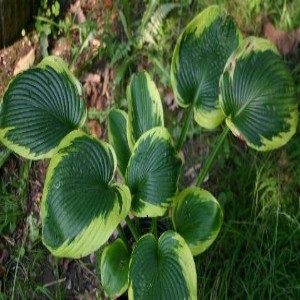
Hosta ‘Frances Williams’
A Couple of Trees and Shrubs
Trees and shrubs are another plant variety that you can count on when planting in Fall. With the moist and warm soil, coupled with lightly nippy weather, they’ll be growing their roots in no time.
However, planting trees and shrubs should have proper soil investigation. Their roots grow deeply to the ground that’s why it’s suggested to consult your local utility companies before digging. Know if there are underground lines in the area where you’ll be planting them. Also, make sure they are in their natural soil grounds.
Ensure that adequate water is given to your newly-planted trees and shrubs before the ground starts to cool down. This will help them grow stronger roots, enough to give them a good start to withstand the cold winter.
To guide you further, take a pick at these fine-looking trees and shrubs you can start planting in fall:
These are some examples of the Trees and Shrubs that you can plant in Fall. You can also visit our nursery to know more about the Trees and Shrubs that you might consider planting
Laidback Lilies
If planted during Autumn, these beautiful ladies will start to bloom as soon as Spring comes– Just imagine how your garden will look by then!
To make sure they’ll be growing fine during the cold days, plant lily bulbs a few weeks before winter. This will give them enough time to establish roots before getting dormant in the winter days.
There’s a lot of types of lilies you can begin planting in Fall. Have a look at some of the most beautiful ones here:
There are different seasons to grow plants throughout the year, and some can be a bit challenging than the other. But as they say, good things come to those who work hard for it. If you want a fully-bloomed garden as soon as Spring starts, might as well make the most of the best planting times in Fall.
Don’t miss out on our specials for this week! Visit our nursery for more information.
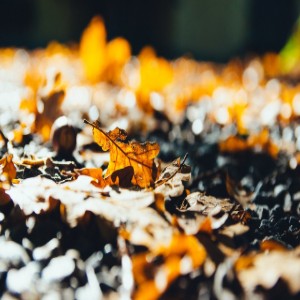 Do you know that Fall is the best time to plant? If not, then there are some things that you should know about. There are some benefits of planting in Fall that nobody might have told you.
Do you know that Fall is the best time to plant? If not, then there are some things that you should know about. There are some benefits of planting in Fall that nobody might have told you.
Most of the gardeners know that Fall is the best time for planting. There are lots of plants that you can check on our nursery to plant during Fall, but for now, let us talk about the good things about planting in Fall.
1.) It is easier to plant in Fall.
The temperature in Fall has relevance in making things easy. The cool temperature helps you and the plants avoid the intense heat of the summer sun, though the soil is warm enough for roots to thrive during winter.
2.) Goodbye Pests and diseases.
These enemies of ours do not belong in our gardens. Pests and diseases are less during Fall. Most of them are either dead or just hibernating and the humidity keeps many diseases away.
3.) More Time.
Gardeners usually have more time during Fall compared to the spring rush and with that being said, Fall has more good days for planting and that would make us very productive.
4.) Weeds are controllable.
Most of the weed seeds are dormant during Fall. It means they do not grow. So gardeners can easily remove them when they appear as sprouts in spring.
5.) Mother Earth will water the plants for you.
Some regions have rainy days during Fall and that would make it save your time from watering the plants and do more things. How awesome is that?

Things could be easier if we know the planting basics too.
- Make sure to dig in. Preparing the ground is easier before the soil freezes over and the rain dries up.
- The compost pile should grow considerably during the autumn months as the grass clippings, tree cuttings, fallen leaves, and the pruning add to its bulk.
- Clean up old plants and unwanted growth. The end of the season is the time to remove your old plants, clean up plant debris and weeds.
- Bring the plant indoors if needed.
Do you want more information about plants that you can plant during Fall? Visit our nursery or contact us and find out more! Also please check our specials for the cheapest price of the plants that you need. Grab yours now!
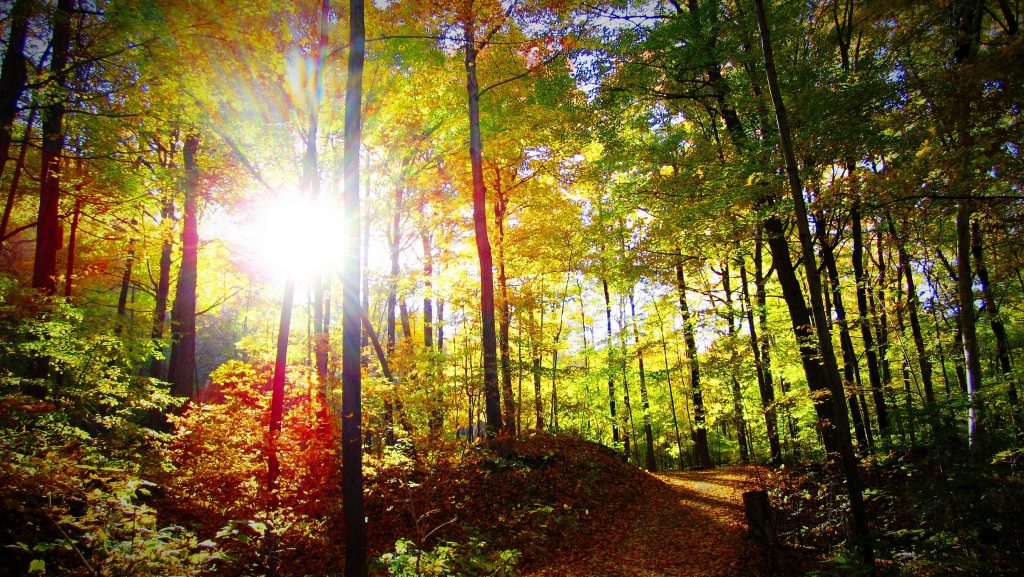
From being a seed to a very strong creation, helped the earth its whole life, and helped those who lived in it. Nature could never be so fantastic without the Shade trees. How lovely a city could be if you can see shade trees in it. Parks could never be so relaxing if there are no shade trees. Other countries may want the trees to be preserved in some of the establishments to maintain peacefulness and fresh air. Students at school can read their favorite novels under a big shade tree.
There are lots of benefits that we can get from shade trees. It could be the missing puzzle piece that you are looking for after a very stressful day. It has been a big help for rehabilitation areas whereas people heal faster in a place where there are shade trees in it.
Top Four Benefits Shade Trees Can Provide
Let us talk more about the benefits of the shade trees. These are most of the benefits that people and even animals could get from it.

1. Shelter
It can be a home/habitat for lots of animals, especially during spring. They could be perfect near or beside a house but, just be careful with the leaves that might be so messy around it but could also be beneficial as it will decompose and will become fertilizer to the neighboring flowers. Also, that foliage can improve the value of your property as the buyers want a nature type of property to buy.

2. Improve Air Quality
They help improve the overall air quality of your environment. That is why many establishments like hospitals and rehabilitation centers want to preserve the shade trees and do not want to cut it out even if it will cost a lot because it can help greatly to their patient’s recovery. Apart from care centers, schools and training facilities benefit from healthy air quality produced by the trees that give shade, too.

3. Climate Control
It can somehow regulate the climate by curbing the effects of wind during windy days, rain (can be a shade or regulates flood) and even mostly the heat of the sun. just like when you have a picnic under it rather than in a grassland without a shade tree, I think that is super hot out there. As many people say, trees are the natural air conditioner because of the cooling effect they release.

4. Best for children
Shade trees are favorable if you have children or if you are planning to have one. You can allow them to play nearby, you can put up a treehouse in it and have a picnic under it. That would be the best memory that they will always have. Additionally, trees protect the kids from ultra-violet rays. Don’t you know that they decrease UV-B exposure by about 50%? Thus, providing protection to them where they spend hours outdoors.
Here are some examples of trees that provide shades. To view the plant information, please click the photo.
Are you looking for Shade Trees? Shop now at Far West Turf & Nursery in Woodland, Washington. You can also shop by phone at 360-263-4700. We have a number of live Shade Trees in SW Washington.
Planning a special occasion in your garden anytime soon? This is nothing a little garden sprucing can’t fix. If you’re looking for a plant to make your garden stand out in the celebration, you have to get to know the Astilbe.
 Found in the forests of Asia and North America, the Astilbes are from the 18 types of rhizomatous flowering plants, a class in the family Saxifragaceae. Some would easily call them as “false goat’s whiskers” or “false spirea”.
Found in the forests of Asia and North America, the Astilbes are from the 18 types of rhizomatous flowering plants, a class in the family Saxifragaceae. Some would easily call them as “false goat’s whiskers” or “false spirea”.
They’re easily recognizable, thanks to their amazing foliage that grows in a beautiful green color, with thick, padded crest of marvelous flowers that stick out from the stem, resembling a fiery impression. The Astilbe is known to be every gardener’s favorite. These herbaceous perennials best enjoy a moist environment ideal for lakeside planting.
Growing your first Astilbe
Different plants have different needs. If you want to grow Astilbe in your garden, make sure you take note of these:
Check the soil
The soil must be moist at all times and should drain the water well. If you have clay soil, change them to the types of peat, moss, or even coarse sand for proper drainage. Astilbes prefer to be planted in a humus-rich soil that won’t easily dry up. Average to above average moisture must be achieved to grow them healthily.
Replant divisions, not the the seeds
Astilbes have a hard time germinating. Some may grow from the seeds, but can be short-lived. It’s best to replant them from another plant’s divisions to make sure they’ll have healthy foundations. Uncovered root plants need to have gaps two times their width, and 4-6 inches down.
Make sure to plant the crown at about 1-2 inches into the soil when they’re still in the pot. When roots show up on the surface, cover them with soil and press down firmly.
Avoid drying them up
They love the shade and would easily dry up when planted in direct sunlight. But also be careful not to give them too much shade if you want to grow more flowers. Growing them in deep shades may be great for their foliage, but makes astilbes produce lesser flowers.
Proper care for your Astilbe
Now that you’ve grown them in your garden, maintenance of this plant should also be properly dealt with. Manage your Astilbes and keep them in tip-top shape by following these rules:
Clump it up
Every 3 to 4 years of Spring, separate the congested clumps to replant or put them in pots. By Summer, these babies will be ready to be planted out. Astilbe flowers can also be sliced off from the stem to be put in a lovely vase inside your home.
Trim at the right parts
Trim yellow-colored leaves off to make way for fresh leaves, same with the withered flower stems after the blooming season. Don’t worry about their foliage because they usually stay until fall. Remember to never cut off the flowerheads as this will permanently stop the growth of its flowers.
Avail our specials now for more than 50 percent off discount. Click this link to check the cheapest Astilbe ever!
These are some of the Astilbes that are widely used.
Please click the image to know more about the plant.
Keep them hydrated
Check on your astilbes every day, ensuring that their soil is always moist. When rains are infrequent, it’ll be best to water them once in a while. They can’t thrive without water.
To be successful in growing and taking care of the pretty Astilbe, you must need to follow these guidelines. Astilbes are perfect additions to a garden, bringing in splotches of colors in time for a special occasion. They’re on their full bloom from May to August and won’t fail to make your garden guests notice too!
Do you want to find out more about Astilbes? Please feel free to call us at 360-263-4700. We have lots of Astilbes in SW Washington.

When talking about flowering plants and their kingdoms, there’s one kind that always stands out. Azalea, also known as the ‘Garden Royalty’ takes its place as the rightful owner of the throne in the garden plant empire. How did the Azalea become the ‘Garden Royalty’? Let’s dig more on that.
With the abundance of its flowers’ colors, sizes, and shapes, Azaleas are also known for their adaptability to survive in any type of environment. They have been blooming everywhere around Georgia, proudly parading its array of colors that range from the purest of whites to the deepest scarlet.
In addition, Azaleas fall into many classes and varying types. They can either be evergreen or can shed its foliage on certain seasons. Evergreen azaleas were also differentiated according to flower colors, sizes, shapes, and stem lengths. This is indeed a plant with so much variety, making it worthy of its title.
Planting royals in your garden
Royalty in the plant kingdom speaks of a class that’s easily maintained all year round. Despite its adaptability, however, there are still pointers you should know if you want this royalty inside your garden.
Mind the roots
The azalea’s roots are shallow, that’s why it’s not advisable to develop around them. They should be planted as such as the highest part of their root ball is particularly placed just above its soil level.
Feed its foliage
They drink up through their foliage so always remember to sprinkle or spray water in its leaves, and stems, not forgetting its roots of course.
Water evenly
Watering them must be done ideally every early morning when the sun is not yet on its heating peak. Maintain watering your azaleas evenly as it’s very crucial to its growth. Never try to dry them up of overwater them. The soil must be moistened, but not too wet. If planted beside irrigation, the best way to do is relocate them to another place where you can control their water intake.
They’re low-maintenance royals
If you’re a first-time gardener, you never have to worry about the azaleas at all. These royal toughies can endure any type of environment they are brought in– it’s precisely why they’re called “Garden Royalty”.
But like any other plant, they are susceptible to contagious diseases. It is recommended to spray them with fungicide every half of each month, beginning pre-summer to mid-June. Parasites can be easily transferred, so take a good eye on that. If affected branches are sighted, prune them immediately.
Make a wonderful spectacle in your garden and plant a couple of these azaleas in! With its array of pretty colors, sizes and shapes anyone can feast eyes on, your garden will look worthy to be marveled at by any type of guests— maybe even the royalties!
Take a look at these Azaleas and be the judge:
These are some of the Azaleas that you might want to consider planting on your beautiful gardens.

Formosa’ Southern Indica Hybrid

Pride of Mobile’ Southern Indica Hybrid

‘Red Ruffles’ Rutherford Hybrid

Gumpo Pink’ Satsuki Hybrid

George Lindley Taber’ Southern Indica Hybrid
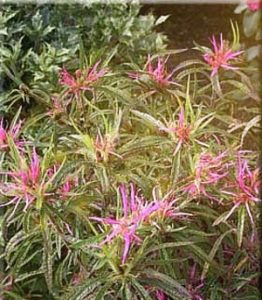
Spider Azalea

Coral Bells’ Kurume Hybrid

Sherwood Red’ Kurume Hybrid
Have a look at our various Azaleas in Far West Turf & Nursery, Woodland, Washington. Or contact us for your inquiries.
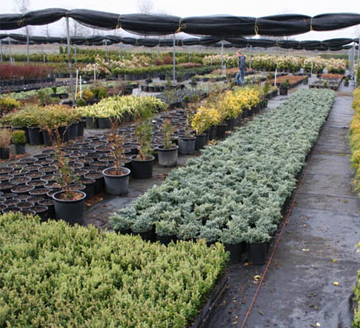
First Annual Memorial Day Landscaping Plants Sale Saturday May 25, 2019 – Monday May 27, 2019. We have the largest selection of landscaping plants and Trees in SW Washington. Premium quality at farm direct pricing. 10 acres of plants and trees to select from.
We’re celebrating this Memorial Day weekend with a SALE to get your Yards looking great again …
Memorial Day Pricing: For every $100 of plants you purchase get an additional $25 FREE (All nursery plants and trees are on sale).
Sale Hours
- Saturday 7:30-5PM
- Sunday 9AM-5PM
- Monday 7:30-5PM
All nursery plants and trees are on sale! Wide selection includes
- Japanese Maples
- Fruit Trees
- Shade Trees
- Conifers
- Lilacs
- Azaleas
- Rhododendrons
- Boxwood
- Ornamental Grasses
- Bush Roses-: Many varieties including the popular Knock Out® and Drift® varieties
- And Much, Much More!
We are located at 35306 Northwest Toenjes Road, Woodland, WA 98674 (Between Woodland and La Center off NW Pacific Highway)


